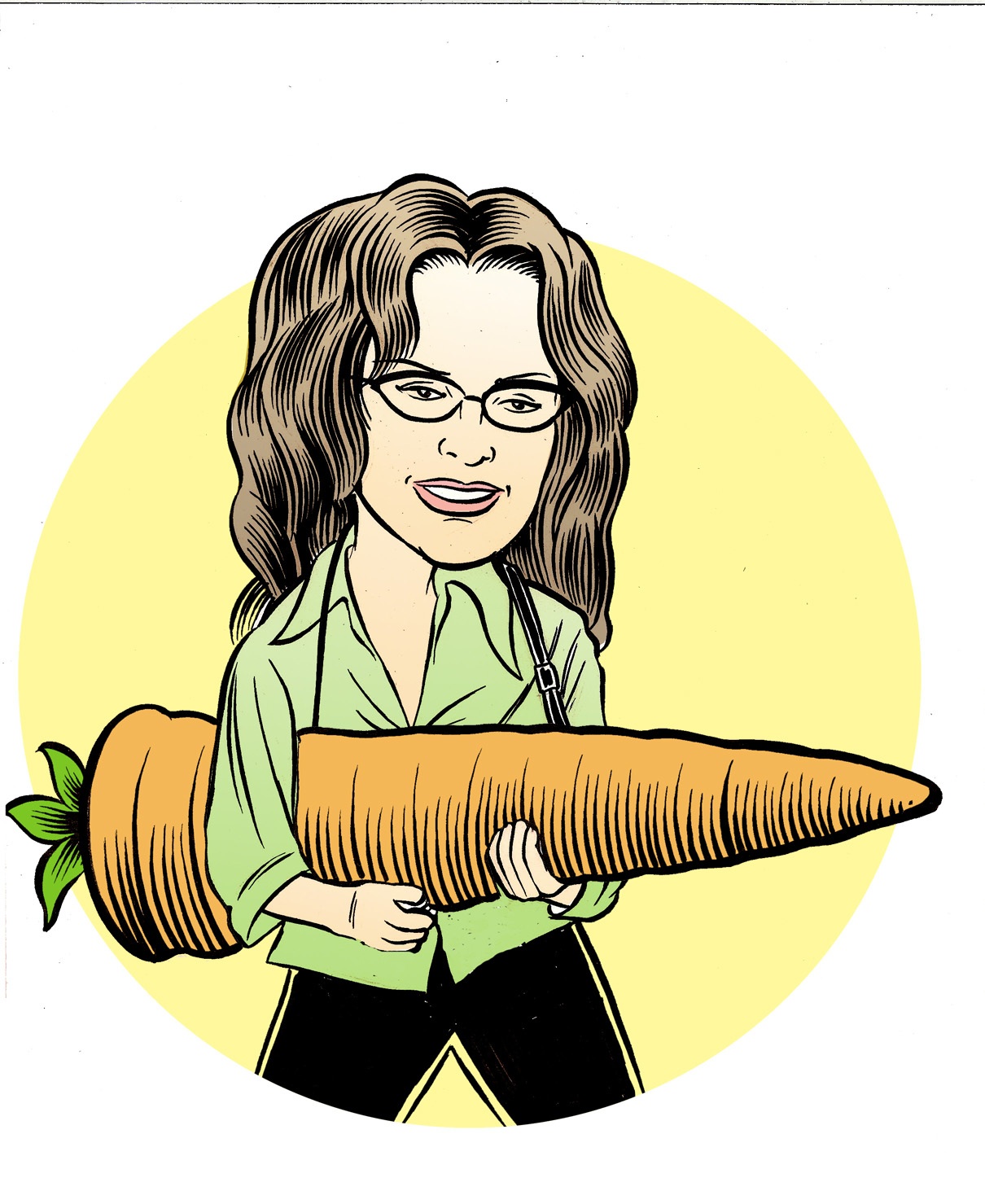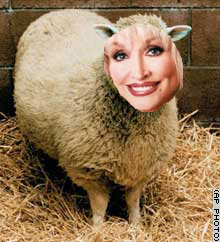 BY ELIZABETH FIEND In 1952, a special tadpole was born. It was the first animal ever cloned. After that breakthrough, scientists spent many years and many millions of dollars on unsuccessful cloning attempts. Then, in 1997, it was ‘Hello, Dolly,’ when the test-tube sheep became the first successfully cloned mammal. Since Dolly’s celebrated birth, scientists have cloned many different animals including goats, cows, horses, pigs, rabbits and mice. A guar (an exotic ox native to India) named Noah was the first endangered animal to be cloned, but unfortunately he lived only 48 hours.
BY ELIZABETH FIEND In 1952, a special tadpole was born. It was the first animal ever cloned. After that breakthrough, scientists spent many years and many millions of dollars on unsuccessful cloning attempts. Then, in 1997, it was ‘Hello, Dolly,’ when the test-tube sheep became the first successfully cloned mammal. Since Dolly’s celebrated birth, scientists have cloned many different animals including goats, cows, horses, pigs, rabbits and mice. A guar (an exotic ox native to India) named Noah was the first endangered animal to be cloned, but unfortunately he lived only 48 hours.
There’s also been a big push to clone our beloved pets, for love and/or profit. The cat came first, then a dog. But it wasn’t easy and as it turns out, the cloning of household pets wasn’t as profitable a business as some had hoped. Now the biotechnology industry has turned much of its attention to cloning farm animals for future human consumption.
Last month, the Food and Drug Administration released an 800-page report which concluded that the milk and meat from cloned cattle, pigs and goats and their offspring is as safe to eat as the food we currently consume. They also added that they won’t recommend special labels for food from a cloned source, because the food from cloned animals is “virtually indistinguishable” from conventional food.
The motivation behind cloning farm animals is that they’ll have superior milk production and carcass traits. It’s even possible that technology will develop enough to clone out negative gene traits that lead to creepy things like mad cow disease.
The current cloning procedure is called somatic cell nuclear transfer, or SCNT. The process involves taking a living cell from an adult animal and inserting the nucleus from the cell into an unfertilized egg that has had its own nucleus removed. Presto, you have a baby that was grown inside the womb of a surrogate mother and, unlike all the rest of the animals on this planet (except other clones, of course), has only one genetic parent.
Right now, cloning to produce food is only going to be done at the very top strata of the breeding pyramid, with DNA from animals that are worth millions. The animals to be cloned are the ones that fetch the top prices for their meat, milk and bacon. Right now it costs upwards of $16,000 to produce a clone. Financial reality tells us we won’t actually be eating a clone, rather, it’s the future progeny of a cloned animal that will make their way onto our dinner plates and and into pet food bowls. With this FDA nod, we could begin seeing food from cloned sources in less than five years.
In typical FDA fashion, the report is based on studying fewer than 100 cloned food animals, and none have been studied over the long run. “Futuraland 2020,” a Maryland dairy, was the first farm in America to have cloned cows. Owner Greg Wiles reportedly told the FDA that two of his clones were suffering from unexplained health problems and claims the agency refused to investigate the matter. Wiles was widely quoted as saying he was “paddled around like a tennis ball from agency to agency.”
The history of cloning is akin to a scientific freak show. What the FDA report didn’t focus on is that cloning poses a serious health risk– if you’re the animal being cloned. While the FDA report mentions some health threats to the newborn animals and their surrogate mothers, they refrain from discussing the ethical issues on any broad level.
Animals feel pain and experience fear. This is a scientific fact, not just some crunchy-granola philosophy. Attempts at cloning animals haven’t gone very well. “There are a hell of a lot of fetal and neonatal deaths along the way” says Gerald Schatten head of the lab at the Oregon Regional Primate Research Center which was attempting to clone monkeys .
In large animals like cows and sheep, scientists found that about half of all cloned embryos that developed into fetuses have dangerous abnormalities and defects in their lungs, hearts and organs, while others have weak immune systems and high rates of tumor growth. Many of these clones die before birth, others within weeks or months after being born. Older clones often die early and have unpredictable or unexplainable deaths.
Essentially, cloning has been one big, decades-long experiment on animals. These experiments have resulted in more deformed animals and deaths than any other reproductive technology. Of 13 calves cloned by James Robl at the University of Massachusetts, four fetuses aborted in the last trimester, one calf died at birth, and two more shortly after birth. Some of Robl’s surrogate-mother cows also died. Autopsies of the cows implanted with clone babies showed livers that were filled with fat.
Dairy farmers and ranchers, the people that actually produce our meat and milk, are not jumping on the cloning gravy train. Cloning is not what they want. Cloning is a business driven by a different industry — the biotechnology firms. In fact, many people believe the FDA report was fast-tracked for the good of a few cloning companies. ViaGen is the company that’s expected to benefit the most from the FDA’s decision to give cloned meat the all-clear. ViaGen (from our President’s home state) is funded by billionaire John Sperling, founder of the dubious on-line degree program at the University of Phoenix.
Dairy farmers, ranchers and others who are actually in the food industry are expressing concerns about consumer reaction to cloned meat and dairy foods. The head of the International Dairy Foods Association (IDFA), Connie Tipton, says “there is currently no consumer benefit in milk from cloned cows.” IDFA and food makers Nestle and Kraft Foods, currently oppose allowing products from cloned animals into our food supply. Already, some manufacturers are considering placing a clone-free sticker on their products.
Even if you don’t give a rat’s ass about animal welfare, think about this: Broad-based genetic diversity is the biological basis of world food security. A wide range of plants and animals is necessary to prevent environmental stress and to preserve the resilience of our eco- and food systems. Remember the potato famine? In four short years, the fungus phytophthora destroyed the principal food source for the entire Irish nation. Using the off-spring of clones to produce our food is a dangerous step towards biological conformity of our food and unknown, unforeseen disasters of the future.
 ABOUT THE AUTHOR: Elizabeth Fiend is Philadelphia’s Beloved Revolutionary Sweetheart. Most people don’t know it yet, but that will change. Miss Fiend is host of the Big Tea Party. But enough of my yackin’, here’s Elizabeth with the 411 on her column: “Most people don’t think about the fact that science doesn’t determine our government’s regulations and recommendations for health and the environment, it’s sleazy politicking and backroom lobbying that makes the rules and I would like to bring this fact more to the forefront,” she says. “My philosophy is decidedly anti-big business/governmental lobbying but in line with the science of (my idol, ok crush) Dr. Walter Willett, Harvard University School of Public Health. There’s an edge to it, but it’s not goofy new age-y stuff with no basis in fact. And besides all that, I am the most fun of all the health advocates. I’m the only one who consistently wears pink and is brewing absinthe in her kitchen (excuse me, that’s illegal, infusing absinthe).” Word.
ABOUT THE AUTHOR: Elizabeth Fiend is Philadelphia’s Beloved Revolutionary Sweetheart. Most people don’t know it yet, but that will change. Miss Fiend is host of the Big Tea Party. But enough of my yackin’, here’s Elizabeth with the 411 on her column: “Most people don’t think about the fact that science doesn’t determine our government’s regulations and recommendations for health and the environment, it’s sleazy politicking and backroom lobbying that makes the rules and I would like to bring this fact more to the forefront,” she says. “My philosophy is decidedly anti-big business/governmental lobbying but in line with the science of (my idol, ok crush) Dr. Walter Willett, Harvard University School of Public Health. There’s an edge to it, but it’s not goofy new age-y stuff with no basis in fact. And besides all that, I am the most fun of all the health advocates. I’m the only one who consistently wears pink and is brewing absinthe in her kitchen (excuse me, that’s illegal, infusing absinthe).” Word.
